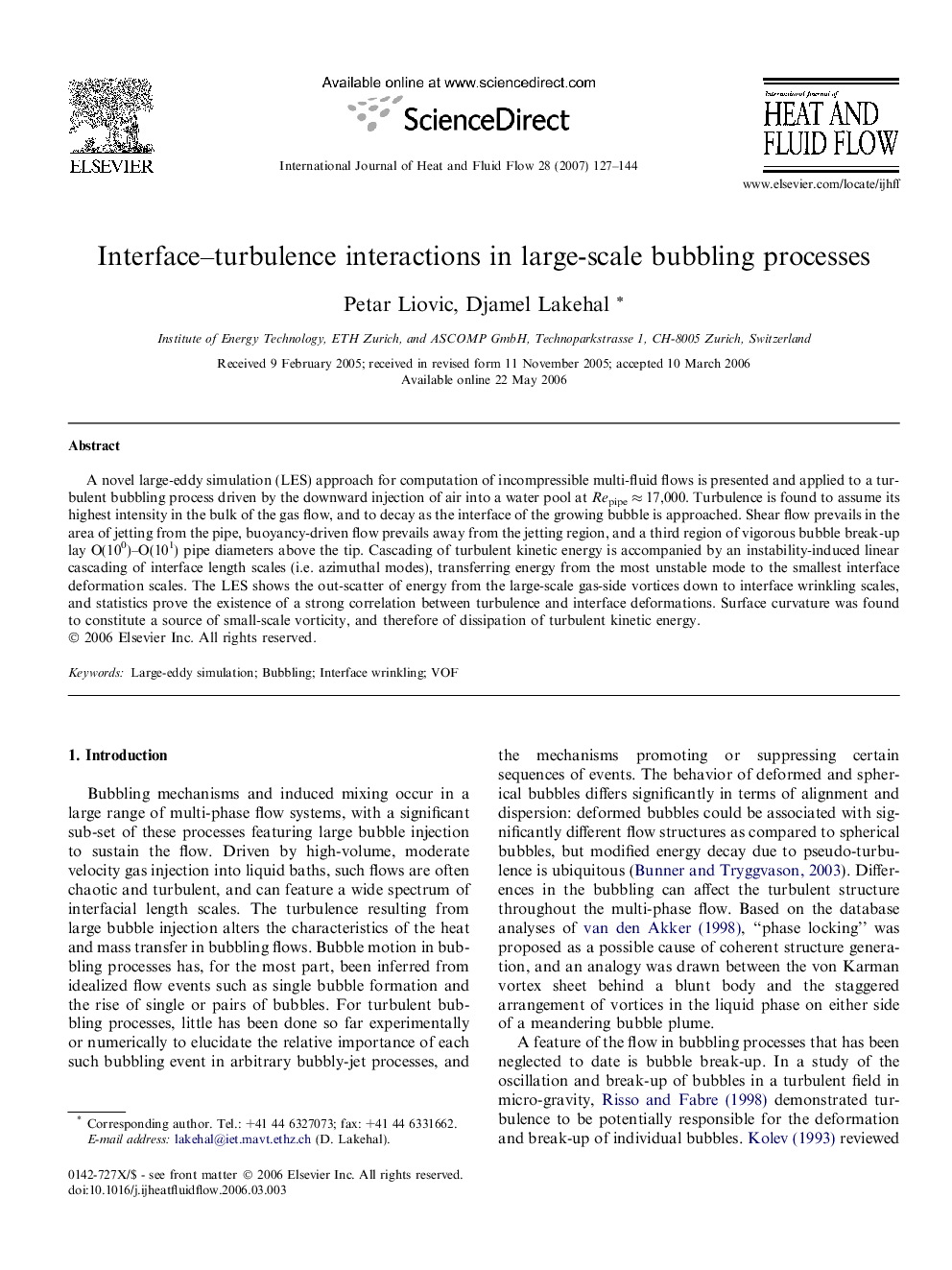| Article ID | Journal | Published Year | Pages | File Type |
|---|---|---|---|---|
| 655779 | International Journal of Heat and Fluid Flow | 2007 | 18 Pages |
Abstract
A novel large-eddy simulation (LES) approach for computation of incompressible multi-fluid flows is presented and applied to a turbulent bubbling process driven by the downward injection of air into a water pool at Repipe â 17,000. Turbulence is found to assume its highest intensity in the bulk of the gas flow, and to decay as the interface of the growing bubble is approached. Shear flow prevails in the area of jetting from the pipe, buoyancy-driven flow prevails away from the jetting region, and a third region of vigorous bubble break-up lay O(100)-O(101) pipe diameters above the tip. Cascading of turbulent kinetic energy is accompanied by an instability-induced linear cascading of interface length scales (i.e. azimuthal modes), transferring energy from the most unstable mode to the smallest interface deformation scales. The LES shows the out-scatter of energy from the large-scale gas-side vortices down to interface wrinkling scales, and statistics prove the existence of a strong correlation between turbulence and interface deformations. Surface curvature was found to constitute a source of small-scale vorticity, and therefore of dissipation of turbulent kinetic energy.
Keywords
Related Topics
Physical Sciences and Engineering
Chemical Engineering
Fluid Flow and Transfer Processes
Authors
Petar Liovic, Djamel Lakehal,
